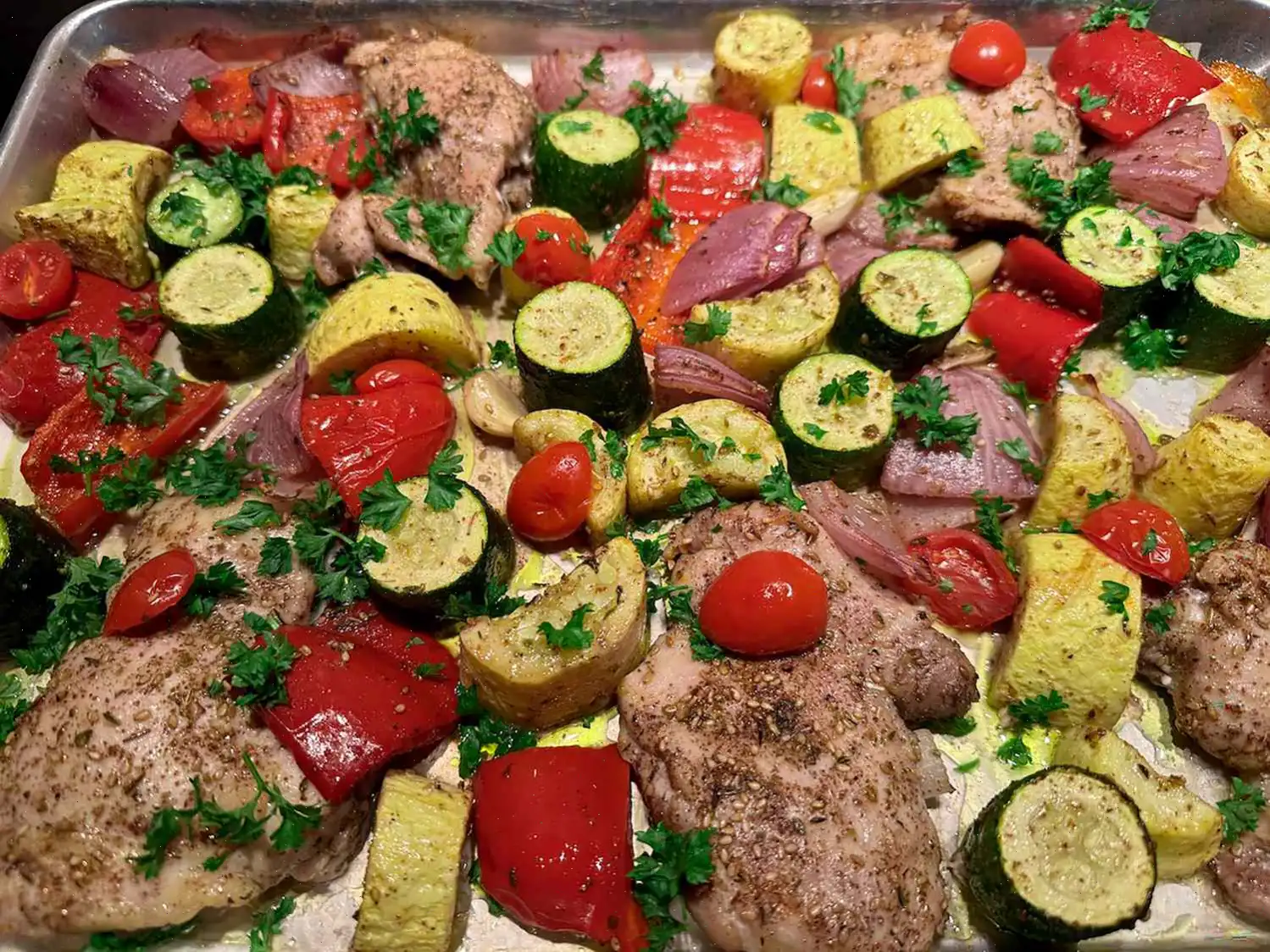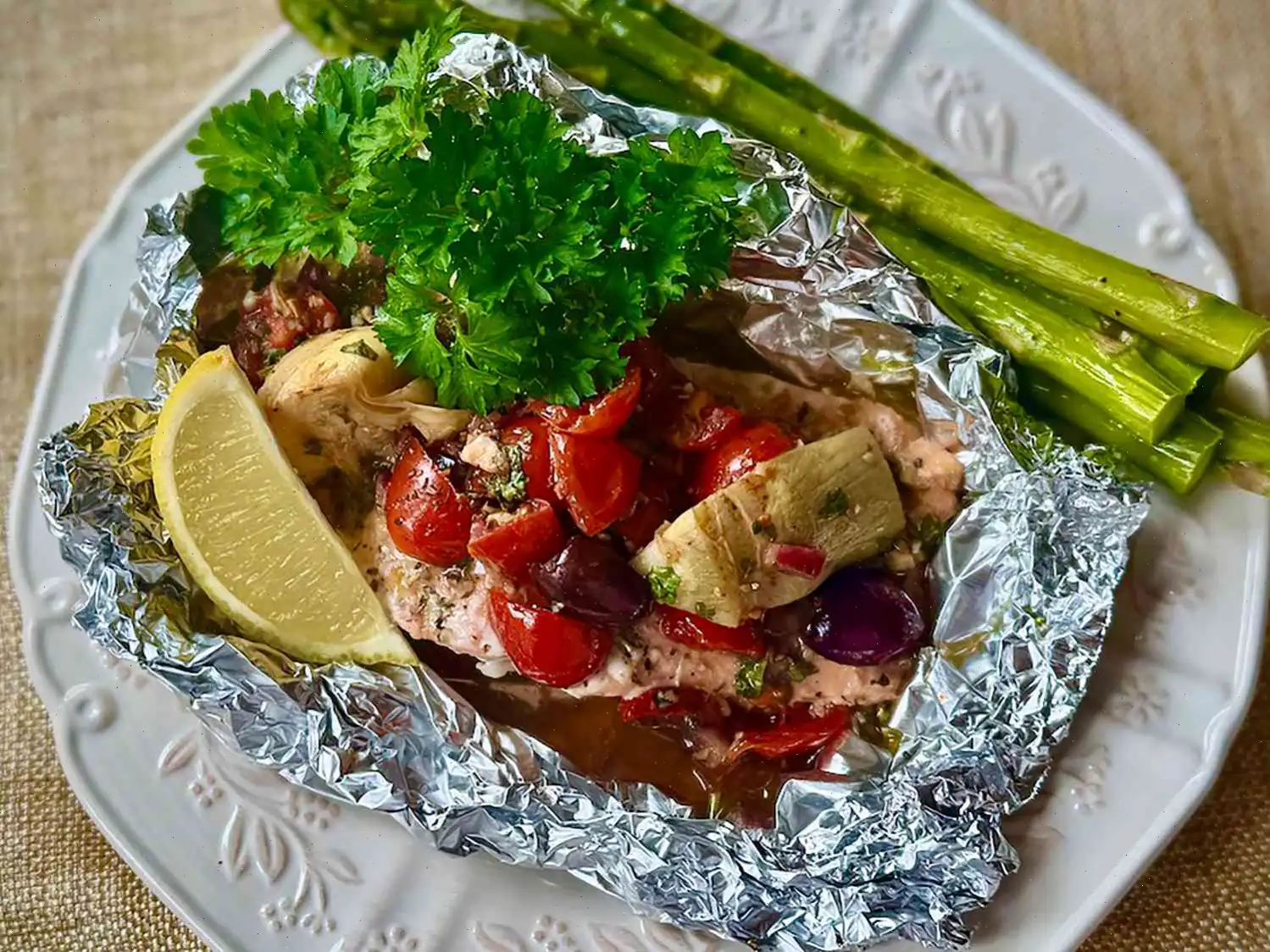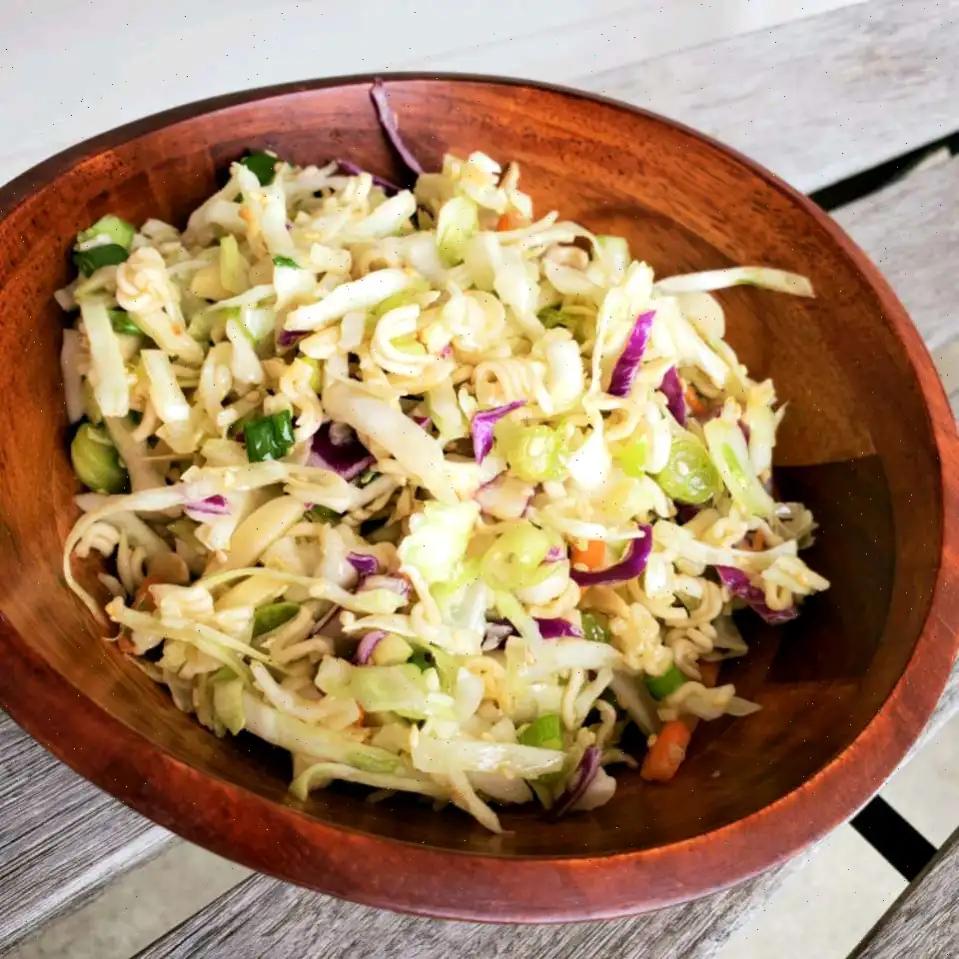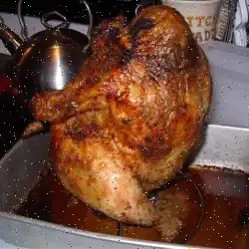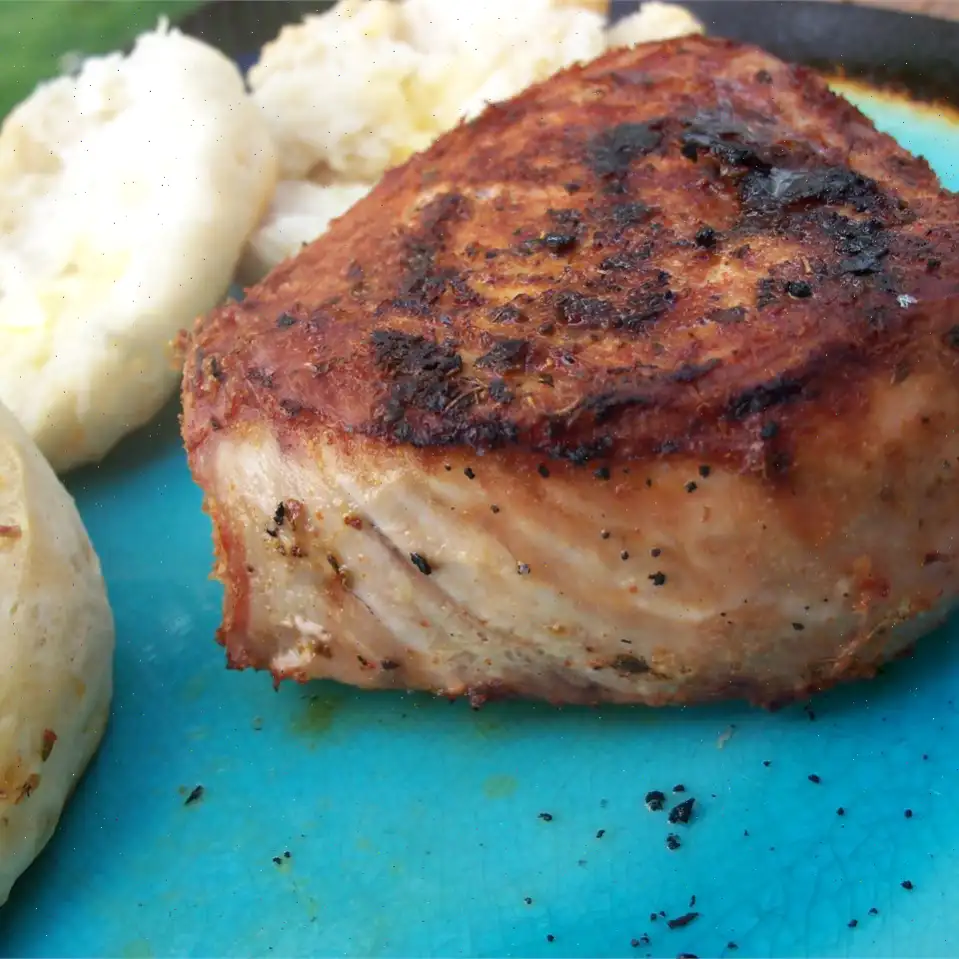
Sheet Pan Za'atar Chicken Thighs and Vegetables Recipe
Ingredients
This recipe is designed for 4 servings. Adjust quantities as needed, but keep cooking times consistent for best results.
- 2 yellow squash, cut into 1-inch chunks
- 2 zucchini, cut into 1-inch chunks
- 1 red bell pepper, cut into 1-inch pieces
- 1 red onion, cut into eighths
- 5 tablespoons olive oil, divided
- 3 tablespoons zaatar seasoning, divided
- Salt and freshly ground black pepper, to taste
- 1 1/2 pounds skinless boneless chicken thighs
- 6 cherry tomatoes, halved (optional)
- Chopped fresh parsley for garnish (optional)
Directions
- Preheat your oven to 425F (220C). Line a rimmed baking sheet with parchment paper or foil for easy cleanup.
- In a large bowl, combine yellow squash, zucchini, red bell pepper, and red onion. Drizzle 3 tablespoons of olive oil over the vegetables and toss to coat.
- Sprinkle 2 tablespoons of zaatar over the vegetables, season with salt and pepper, and stir until evenly coated. Spread the vegetables across the prepared baking sheet in a single layer.
- Pat chicken thighs dry with paper towels. Drizzle the remaining 2 tablespoons of olive oil over the chicken and sprinkle with the remaining 1 tablespoon of zaatar. Season with salt and pepper.
- Nestle the chicken pieces among the vegetables on the baking sheet.
- Bake in the preheated oven for 20 minutes. Then add cherry tomatoes (if using) and continue baking until the chicken is fully cooked, about 10 minutes more. Check doneness with an instant-read thermometer; it should read 165F (74C) in the center of the chicken.
- Transfer the chicken and roasted vegetables to a serving plate. Garnish with fresh chopped parsley if desired and serve warm.
Nutrition Facts (per serving)
- Calories: 508
- Total Fat: 32g (41% DV)
- Saturated Fat: 7g (34% DV)
- Cholesterol: 208mg (69% DV)
- Sodium: 513mg (22% DV)
- Total Carbohydrate: 16g (6% DV)
- Dietary Fiber: 5g (18% DV)
- Total Sugars: 9g
- Protein: 45g (90% DV)
- Vitamin C: 73mg (81% DV)
- Calcium: 117mg (9% DV)
- Iron: 4mg (23% DV)
- Potassium: 1181mg (25% DV)
History and Origins of Zaatar Chicken
Zaatar chicken, especially when prepared on a sheet pan with vegetables, has its roots in the culinary traditions of the Middle East. Zaatar itself is a fragrant spice blend commonly made from dried thyme, oregano, sumac, sesame seeds, and salt. Historically, it has been used for centuries in Levantine cuisine, prized for both its flavor and supposed medicinal properties. The combination of zaatar with chicken likely emerged as a practical yet flavorful way to bring these aromatic spices into everyday home cooking. Over time, the simplicity of roasting meat with vegetables in a single pan became a popular adaptation outside the Middle East, particularly in Western kitchens seeking both convenience and exotic flavor.
Regional Variations
The use of zaatar varies significantly across regions. In Lebanon and Syria, zaatar is often paired with olive oil and bread, while in Israel and Palestine, it is commonly sprinkled over chicken or lamb before roasting. The sheet pan approach is particularly common in North American and European kitchens, where home cooks appreciate the ease of cooking both meat and vegetables together. Regional differences also extend to the choice of vegetables; Mediterranean varieties such as zucchini, bell peppers, and cherry tomatoes are preferred, reflecting the flavors and produce of the Eastern Mediterranean climate.
Differences from Similar Dishes
Zaatar chicken differs from other roasted chicken dishes primarily due to the distinctive herbaceous and tangy flavor of the zaatar spice blend. Unlike simple herb-roasted chicken or garlic and lemon preparations, zaatar imparts a slightly nutty and citrusy note from the sumac, as well as a toasted aroma from sesame seeds. This makes it uniquely aromatic and layered in taste. Unlike Middle Eastern shawarma or kebabs, which are often grilled or cooked in a tandoor, the sheet pan version allows for the vegetables to roast alongside the meat, creating a one-pan meal that is both practical and flavorful.
Serving Occasions
Sheet pan zaatar chicken with vegetables is versatile in how it is served. It works well for casual weeknight dinners as well as more formal gatherings. In Middle Eastern households, similar dishes are often enjoyed family-style, with the chicken and vegetables placed in the center of the table and accompanied by flatbreads, rice, or salads. In Western adaptations, it is commonly served on individual plates with a sprinkle of fresh parsley, making it visually appealing and easy to portion. The ease of cleanup and the balance of protein, vegetables, and healthy fats make it an ideal meal for both everyday cooking and entertaining guests.
Interesting Facts
Zaatar is more than just a seasoningit has cultural and historical significance. Traditionally, it was believed to improve health, boost energy, and even serve as a form of protection against illness. Some families in the Levant have secret zaatar blends passed down through generations, giving each household a unique flavor profile. Interestingly, modern chefs have experimented with zaatar in fusion dishes, from zaatar roasted nuts to pizza toppings, showing its versatility beyond traditional applications. Using it on a sheet pan with chicken and vegetables combines centuries-old flavors with modern convenience, creating a dish that is both authentic and accessible.


